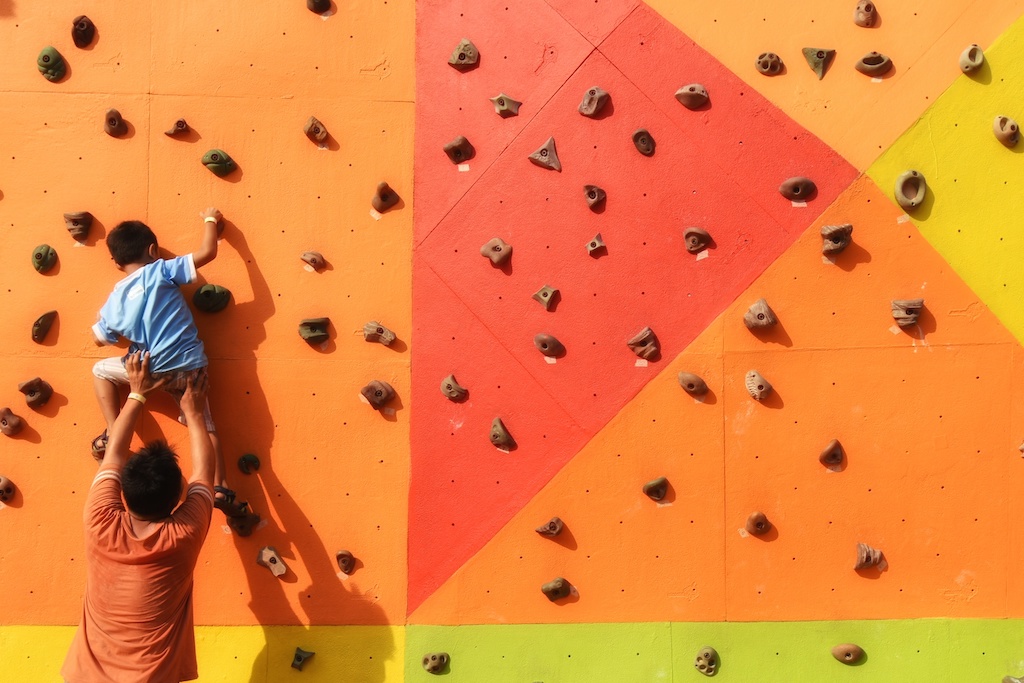SingaporeMotherhood | Baby & Toddler
December 2019
Posture Perfect: 3 Ways to Help your Child Stop Hunching and Slouching

How many times have you heard parents telling their children to “sit up straight”? In fact, your parents probably said the same thing to you when you were young. Then, we slouched while watching TV, while reading, and while doing our homework. Add gadgets and devices to the list, and it’s not surprise that kids these days have bad posture. They are are hunching over more than ever before, and some even get a condition called ‘text neck’.
“My husband will slap my child’s back each time he sees her slouching. This slap serves as a constant reminder even when he is not around because it has made my child conscious that daddy would slap her back if she doesn’t sit up straight,” says Sara Tan, 42, a director and mother of two children aged 13 and 10.
Why do Kids Slouch?

So what’s stopping kids from sitting or standing straight? Is it something that’s inherent in the structure of their bodies or do they lack certain nutrients such as calcium?
Dr Wendy Sinnathamby, a paediatrician at Kids Clinic @ Mt Alvernia, says it’s neither. “This is usually due to poor habits developed whilst standing and sitting. Lack of exercise due to a sedentary lifestyle can also contribute as lack of strength in muscles result in shorter periods of being able to maintain a straight back whilst standing or sitting.”
If your child is showing signs of hunching, it would be good to nip that in the bud. Having a bad posture does more damage to your child’s body than just slouching, says Dr Sinnathamby.
“Bad posture in kids can lead to issues with the musculoskeletal systems such as poor balance, upper and lower back pain, shoulder pain, increased risk of arthritis in later life, and headaches.”
(See also: Buying a Car Seat? Read this First)
Physical Conditions that cause Hunching

Sometimes, the hunch exists because of a physical condition, shares Sylvia Ho, senior principal physiotherapist at Core Concepts. These include:
- Postural scoliosis: a condition where the spine curves to the side, showing an “S” or “C” shape instead of a straight line
- Arched or flat back: compressed lower back muscles in the arched back posture, and excessively stretched back structures in the flat back posture can cause pain
- Valgus knees: also known as ‘knock knees’ this is a condition in which the knees are pointed inwards and touch each other when legs are straightened
- Flat feet: the arches of the feet are flattened
These conditions are usually pre-existing and can cause bad posture.
(See also: Help your Child Grow Taller with Tian Qi and other Traditional Recipes)
1. Teach Good Habits for Good Posture

“When my kid is seated, I make sure he has both feel flat on the ground. Also, when he’s studying, I make sure he gets up and moves around. If he doesn’t move around, he will slouch over the table,” says Angie Lim, 48, customer service officer and mother of two children aged nine and seven. These good habits that can help your child avoid developing bad posture. Dr Sinnathamby offers some other tips for helping your child to maintain a no-hunch back.
- Ensure you yourself have good posture whilst sitting and standing, so you set a good example for your child
- Heap lots of praise on your child when your child maintains good posture
- Let your child use an age-appropriate chair. Encourage your child to sit with both feet on the floor
- Ensure that their table and desks are at same level as their elbow when they are seated
- Remind your child to keep their back straight, and their shoulders shifted back when seats at their desk
- Use visual aids to explain to child the importance of maintaining a good posture
- Encourage exercises such as cycling, climbing, yoga, and others that will help strengthen muscles
- Let your child sleep on a firm mattress
- Discourage your child from reading and doing homework on bed
2. Carry that School Backpack Correctly

“I try to not let my children put too many books in their schoolbags. If they do carry a backpack with their books, they will have another small bag with their files and books,” says Sara. Heavy schoolbags are one of the top contributors to bad posture, but your child will still have to carry one to school. What can help is carrying it the right way. Here’s what Dr Sinnathamby suggests:
- Try to ensure that weight of school bag and contents is less than 10 per cent of your child’s body weight. Most schools allow children to leave their textbooks in lockers or under their desks so they do not have to carry such a heavy load everyday
- The school bag should not hang more than 10 cm below your child’s waistline
- Look for padded and broad shoulder straps. Ensure that the straps are hung across both shoulders to maintain even distribution of weight
- The straps should be adjustable as well. Adjust them from time to time to ensure that they are still a good fit to your child’s body
- Fasten the waist straps if the bag has them
- A backpack with multiple compartments may ensure better distribution of weight
- Place heavy items at the base of the backpack closer to the spine.
“Children can be instructed to carry their school bags with the straps shortened, rather than let loose – the latter causes their bag to sag below the lower back, contributing to increased weight,” Ms Ho adds. “Additionally, they should maintain an upright, balanced posture when carrying the bag, rather than slouching or slanting to a particular side. The healthy way to carry a school bag is closely and firmly to the body.”
Physiotherapist Ms Ho also suggests that parents should purchase schoolbags with better support, such as bags with chest and waist straps. These enable children to brace the load better. What not to get? Shoulder bags, as these accentuate poor posture and back problems by transferring all the load onto one shoulder.
3. Take Breaks when using Gadgets

The frequent use of gadgets – or simply using them in the wrong position – could contribute to bad posture too. It’s common for kids to hunch over small screens. Over a long period, children tend to remain locked in certain hunched positions that can cause them discomfort, pain and poor posture, says Ms Ho. The same applies to larger devices like laptops. Overuse of these causes children to strain their necks and backs, especially when they lean forward to look at the screens.
Ms Ho advises parents to encourage their children to get up from using gadgets and walk around every 20 to 30 minutes, as well as to stretch daily to prevent physical complications. But she also noted that there are other factors that lead to children having bad posture, such as childhood obesity. Parents should therefore ensure that their children lead active and healthy lifestyles.
Some exercises that are particularly useful in helping kids who hunch are: hamstring stretches, chest stretches, spinal mobility exercises, postural correction, cardio exercises, as well as back, abdominal, gluteal and shoulder strengthening exercises.
“For serious cases, it is advisable to visit a physiotherapist who can assess and diagnose the child’s postural habits, and recommend the appropriate corrective exercises to improve the child’s flexibility, strength and posture. In severe cases, a brace may also be required,” she adds.
Keep that Back Straight
Good posture is not difficult to achieve. With these tips, let’s help our children stand tall as they reach for the stars.
(See also: Is your Child’s Schoolbag Too Heavy?)
All content from this article, including images, cannot be reproduced without credits or written permission from SingaporeMotherhood.
Follow us on Facebook, Instagram, and Telegram for the latest article and promotion updates.





